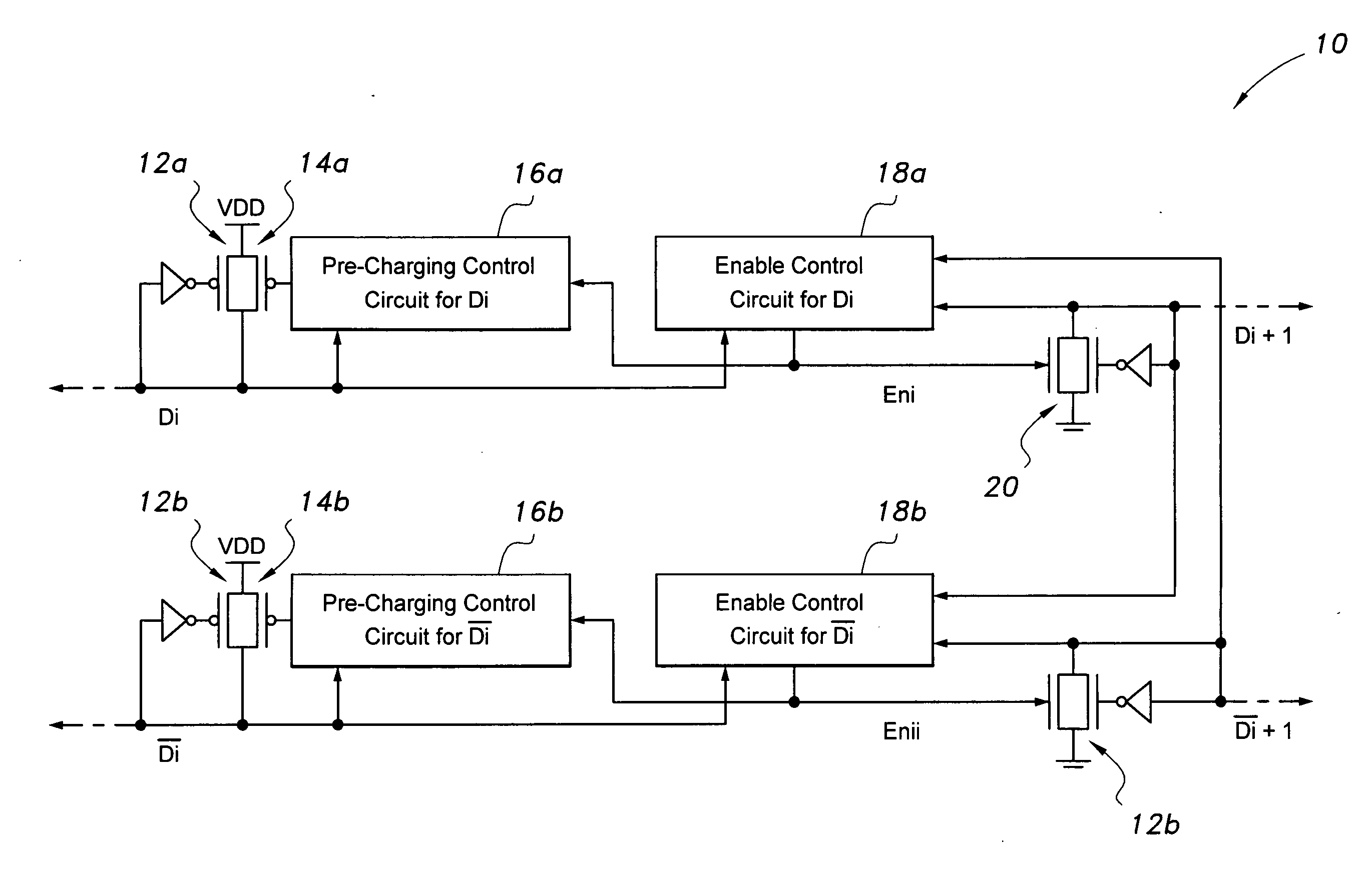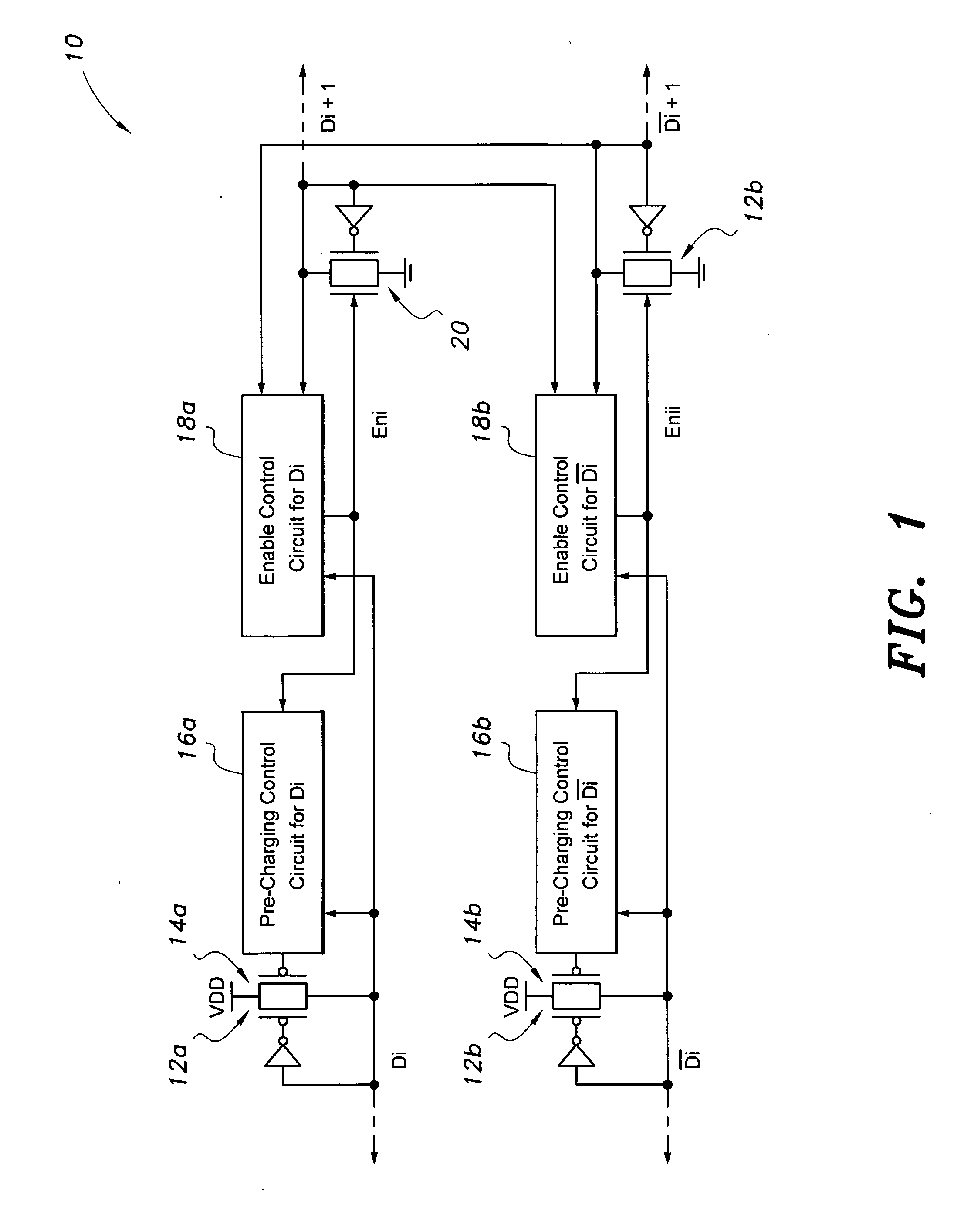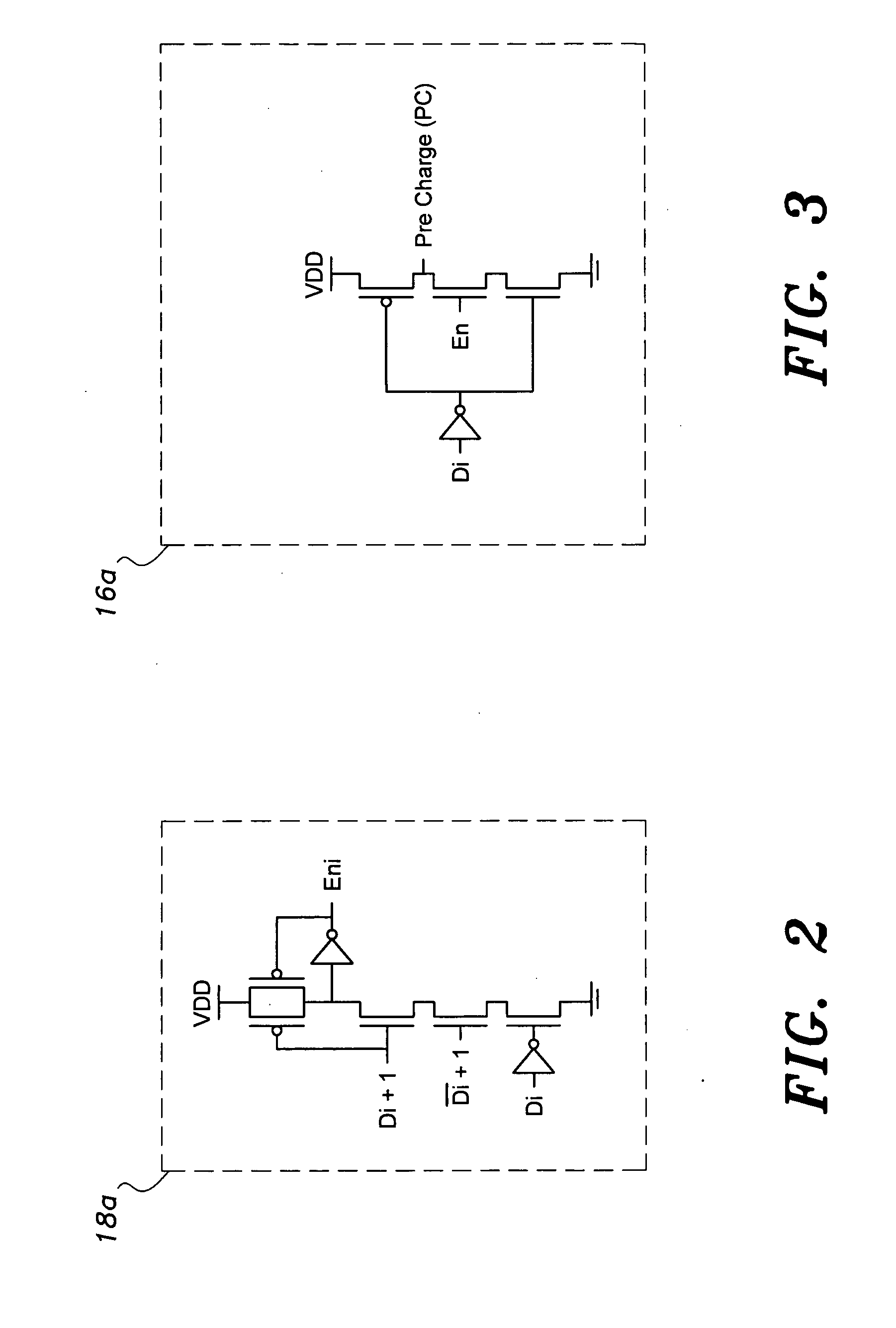Two-phase return-to-zero asynchronous transceiver
a transceiver and return-to-zero technology, applied in the field of asynchronous on-chip communication, can solve the problems of increasing the design time of the chip, rendering this design style impractical, and very short time-to-market demands, and achieve the effect of simplifying the design of the communication circuit and confirming performan
- Summary
- Abstract
- Description
- Claims
- Application Information
AI Technical Summary
Benefits of technology
Problems solved by technology
Method used
Image
Examples
Embodiment Construction
[0027]As shown in FIG. 1, the two-phase return-to-zero asynchronous transceiver 10 is delay-insensitive and specifically designed for on-chip interconnects. A handshaking protocol utilizes return-to-zero data format, thereby significantly simplifying the design of communication circuits. Robust transceiver circuits that implement the return-to-zero data formatted handshaking protocol have been developed, and their performance has been verified using SPICE simulations with a 0.13 pm, 1.2V technology.
[0028]As shown in FIGS. 4 and 5, both request and acknowledge signals are generated at the receiver of transceiver stages 400, and that the handshake protocol combines the four-phase data level-encoding (i.e., RZ) with the two-phase data exchange steps (trips), as detailed in the data transfer step plot 500. When a new data initiated at stage i is received at stage i+1, an enable signal is generated at stage i+1(Eni+1). This enable signal initiates the transfer of data to the next segment...
PUM
 Login to View More
Login to View More Abstract
Description
Claims
Application Information
 Login to View More
Login to View More - R&D
- Intellectual Property
- Life Sciences
- Materials
- Tech Scout
- Unparalleled Data Quality
- Higher Quality Content
- 60% Fewer Hallucinations
Browse by: Latest US Patents, China's latest patents, Technical Efficacy Thesaurus, Application Domain, Technology Topic, Popular Technical Reports.
© 2025 PatSnap. All rights reserved.Legal|Privacy policy|Modern Slavery Act Transparency Statement|Sitemap|About US| Contact US: help@patsnap.com



